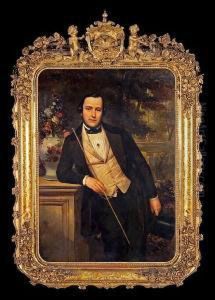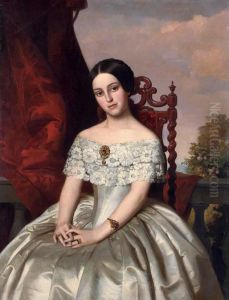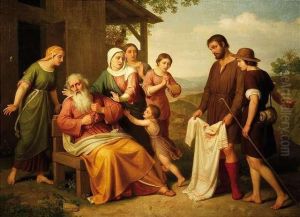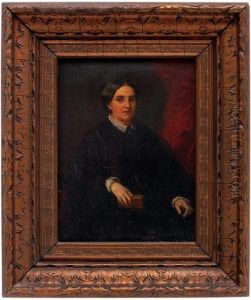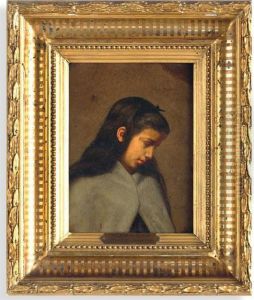Pelegrin Clave Y Rogue Paintings
Pelegrín Clavé y Roqué was a prominent Catalan painter who played a significant role in the development of artistic styles and education in Mexico during the 19th century. Born on April 28, 1811, in Reus, Catalonia, Spain, Clavé showed an early interest in the arts, which led him to pursue his passion with dedication and fervor. He initially studied at the Escola de la Llotja in Barcelona, where he was influenced by the Neoclassical style, a foundation that would deeply inform his later work.
After establishing himself in Spain, Clavé's career took a significant turn when he decided to move to Mexico in 1846, at a time when the country was undergoing major social and political changes. This move was motivated by the promise of new opportunities and the potential to contribute to the burgeoning cultural scene in Mexico. Upon his arrival, he was immediately recognized for his talent and was appointed as a professor at the prestigious Academia de San Carlos in Mexico City, where he would go on to influence a generation of Mexican artists. Clavé's approach to teaching and his artistic style were instrumental in the transition from Neoclassicism to Romanticism in Mexico. He advocated for the study of live models, a practice that was not common at the time, and emphasized the importance of drawing and the study of European masterworks, which he believed were essential for the development of a refined artistic taste.
Throughout his career in Mexico, Clavé painted numerous portraits, religious subjects, and historical scenes, which were highly regarded for their technical skill, emotional depth, and the incorporation of symbolic elements. His work not only reflected the stylistic transition of the period but also contributed to the formation of a unique Mexican artistic identity. Among his notable works are the portraits of prominent Mexican figures, which have been celebrated for their detailed representation and psychological depth.
Pelegrín Clavé's influence extended beyond his paintings. Through his teaching and administrative roles at the Academia de San Carlos, he implemented significant reforms that modernized the institution and its curriculum, aligning it more closely with contemporary European art movements. His efforts helped lay the groundwork for the later development of Mexican muralism and the emergence of artists such as Diego Rivera, José Clemente Orozco, and David Alfaro Siqueiros, who would go on to define Mexican art on the world stage.
Pelegrín Clavé y Roqué passed away on July 30, 1880, in Mexico City. His legacy is preserved through his contributions to the Mexican art scene and his lasting impact on the generations of artists he taught and inspired. Today, his works are held in high esteem and can be found in museums and private collections in Mexico and Spain, serving as a testament to his enduring influence on the course of art history in both countries.
